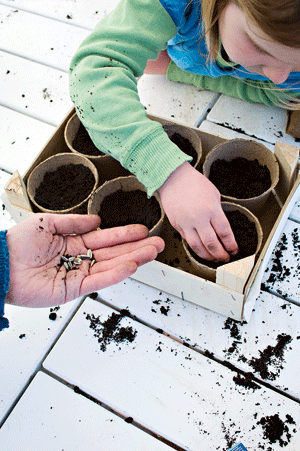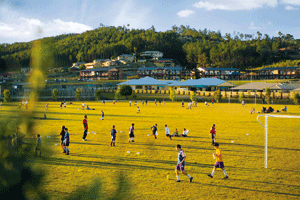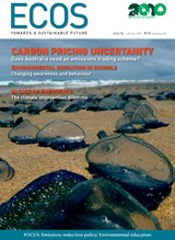
|
Published:
Growing more sustainable communities
According to the Green Building Council of Australia, some 85 per cent of the Australian population is now concentrated in cities, and the nation’s population is expected to rise by 60 per cent by 2050. Clearly, the coming decade will see a greater emphasis not only on environmental impacts, but also the social impacts of our expanding urban areas.

|
While much has been achieved over the last two decades to quantify and improve the environmental performance of buildings and infrastructure, it is still early days in terms of understanding how we can shape more sustainable communities within the built environment.
The CSIRO Sustainable Communities Initiative (SCI), an early national effort that ran from 2006 to 2009, began with the understanding that sustainability challenges are complex and that no sector has the capacity to deal with them independently.1 Furthermore, effective sustainable communities require systemic, collaborative and integrated approaches to succeed.
The SCI resulted in five community sustainability projects around Australia. The report describes how communities, government, non-government, business and research worked together to address sustainability issues.2
Elsewhere, the Victorian Government began developing a ‘VicUrban Sustainability Charter’ in 2004. This aimed ‘to demonstrate commercially successful, sustainable urban development to private industry, and to influence the development sector towards creating sustainable communities’.3
|
At the Lockerbie sustainable greenfields development north of Melbourne, 13 000 lots will be subdivided from 1100 hectares of farmland to create a residential suburb that will be home to around 35 000 people. |
The development was part of CSIRO’s Sustainable Communities Initiative, a collaboration that included CSIRO, Delfin Lend Lease, Parsons Brinckerhoff, Origin Energy, Local Governments for Sustainability, WWF Australia and The Natural Edge Project. |
The partners developed an integrated assessment framework for the development. The framework’s sustainable community performance indicators cover transport, education, health, economic development, housing affordability, and community and environmental issues.4 |
The sustainability framework was embedded within the development process through early stakeholder workshops, which helped to establish the community goals and objectives. |
By 2007, the final charter was launched, including a set of three assessment tools for master-planned communities, urban renewal communities, and provincial communities. The first tool – for master-planned communities – has now been road tested and released, with the remaining two areas currently released for comment.
These assessment tools provide a comprehensive set of considerations to inform the design and retrofit of precincts and communities in Victoria, and a weighted scoring system to rate performance. The tools are based on a set of indicators across five focal areas: community well-being, environmental leadership, urban design excellence, housing affordability and commercial success.
For example, a focus on environmental leadership would prioritise energy savings or efficiency, such as:
-
passive solar design
-
efficient heating and cooling appliances, lighting and water heating
-
the potential for carbon offsetting.
The tool would then drill down further; for example, requiring the user to indicate whether the efficiency of hot water systems is equivalent to a gas-boosted solar hot water system, an electric-boosted system or an electric heat pump system. This performance measure would then allow a maximum of five points out of a total of 30 points for all energy considerations.5
In 2009, VicUrban partnered with the Green Building Council of Australia (GBCA) to develop a national framework for sustainable communities. The initiative evolved from a national stakeholder workshop, involving government and industry representatives including Stockland, Lend Lease, MAB, Leighton, Mirvac, Grocon and the GPT Group.
The objectives of the framework include:
-
providing national consistency and a common language around the definition of best practice sustainable communities
-
facilitating stakeholder engagement during the evolution of sustainable communities
-
providing a basis for assessment and evaluation of sustainable community evolution.6

|
|
Playing fields at Pacific Pines estate, Gold Coast – access to a range of facilities and services is vital for the well-being of communities in new urban areas. Credit: Stockland
|
In addition to the GBCA’s work with the Green Star rating system for buildings, the Australian Green Infrastructure Council is developing a rating scheme to provide industry and developers with a methodology to rate the performance of infrastructure projects, complementing the Green Star Communities program. Such projects include:
-
roads, rail, bridges and tunnels
-
airport airside facilities
-
distribution grids (pipes, poles, wires)
-
water infrastructure.
Adam Beck is GBCA’s Project Leader for Green Star Communities. He says the new rating tool follows GBCA’s seven years’ experience in working with government and industry to develop rating tools for the built environment to national and international best-practice standards across the full sustainability spectrum.
‘This will allow us to assess communities, precincts and places across Australia. It will also provide government and industry the opportunity to be independently assessed and certified,’ he says.
|
Darwin and Brisbane have beaten other capitals, but no Australian city fared well in the first Australian Conservation Foundation (ACF) sustainable cities ranking. |
ACF’s Sustainable Cities Index tracked the progress of Australia’s 20 largest cities across 15 indicators: air quality, ecological footprint, green buildings, water, biodiversity, health, density, well-being, transport, employment, climate change readiness, education, food production, public participation and household debt. |
Darwin scored well with clean air, strong biodiversity, and low levels of unemployment and household debt, but lost marks on health and readiness for climate change. |
Perth came last on the list because of its very high ecological footprint per person, and the amount of water supplied to houses relative to annual rainfall. While Perth’s public transport system is better than that of many other cities, it still scored poorly on transport, with 641 private vehicles for every thousand people. |
Most cities were clustered around the middle of the scoring range. Melbourne came seventh: Sydney twelfth. |
ACF Executive Director, Don Henry, says that liveability is not the same |
While progress is being made, the challenge of understanding community interactions with built environment developments or retrofits – and embedding this knowledge into rating schemes – is significant. Any such assessment system will need to address the complexity of community interactions at local and regional levels, and include residents, visitors, tourists, businesses, industry and government.
Certainly, the current collaborative approach in Australia provides a solid foundation for moving forward.
1 Rooney S (2008). A partnership approach to tackling sustainability. ECOS, April–May 2008, http://tinyurl.com/ecos142-29
2 Williams R, Rooney S, Grunbuhel C and McMillan L (2009). Working Together ~ Learning Together: The Sustainable Communities Initiative Final Report, CSIRO Sustainable Ecosystems (see www.csiro.au/science/SCI.html).
3 VicUrban (2007). Sustainable Community Rating – Urban Renewal Community, Victorian Government (see also http://www.sustainablecommunityrating.com).
4 See footnote 2 and www.csiro.au/partnerships/Lockerbie-SCI.html
5 VicUrban (2007). Sustainable Community Rating – Urban Renewal Community, Victorian Government.
6 Green Building Council Australia (2010). Green Star Communities: A Draft National Framework, February 2010.



